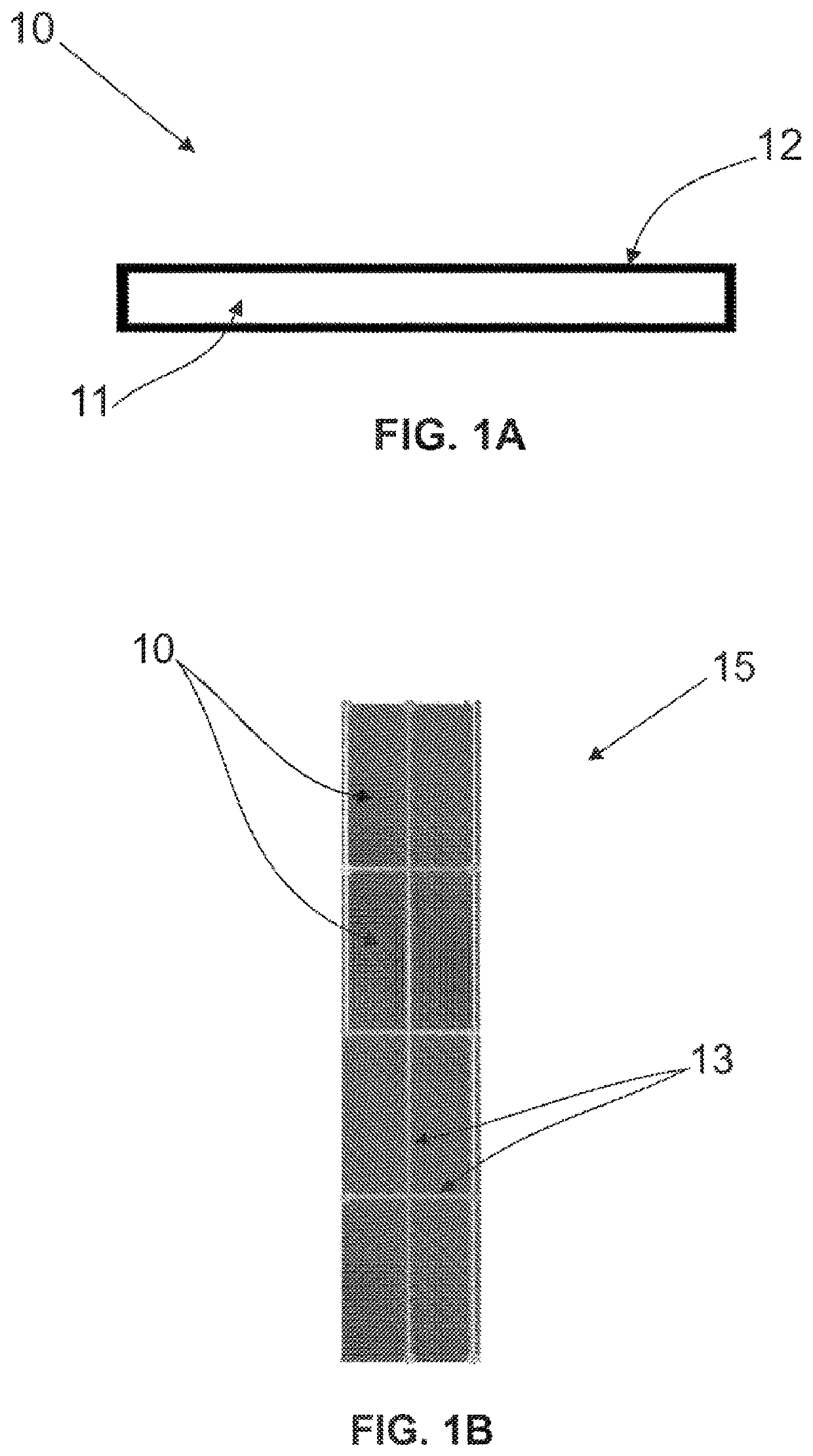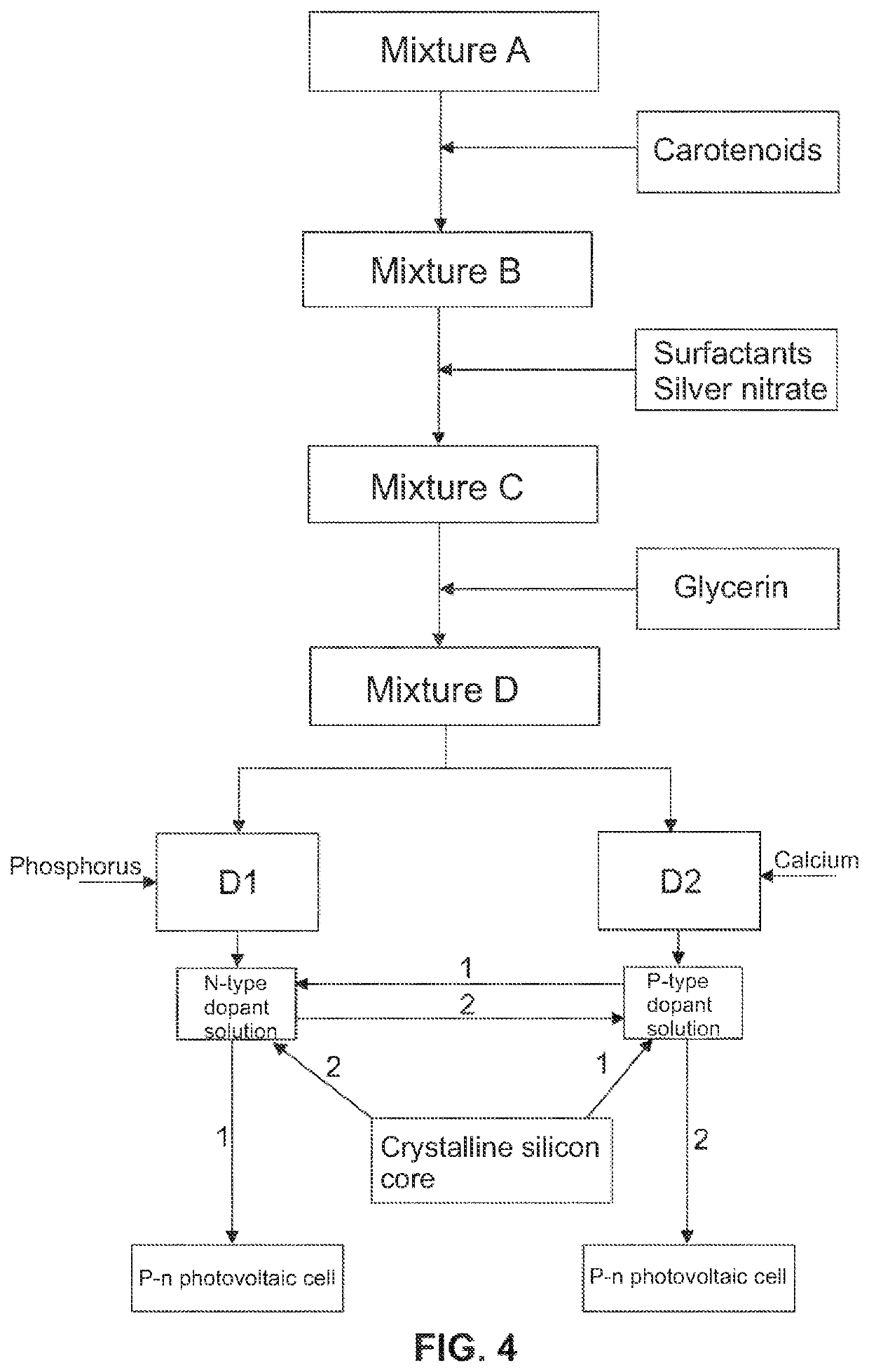Photovoltaic cell, method for manufacturing an encapsulated photovoltaic cell, electrical connection unit for a photovoltaic tile, and photovoltaic tile
- Summary
- Abstract
- Description
- Claims
- Application Information
AI Technical Summary
Benefits of technology
Problems solved by technology
Method used
Image
Examples
Embodiment Construction
[0051]According to a preferred embodiment and as illustrated in FIGS. 1A and 1B, the p-n type photovoltaic cell 10, the subject of this invention, comprises a crystalline silicon structure 11 that is coated with a conductive film 12 formed from a p-type dopant solution and an n-type dopant solution.
[0052]The p-type and n-type dopant solutions comprise, in addition to the dopant elements, carotenoid components as described in detail below.
[0053]In this regard, the p-type dopant solution comprises a dopant element from group 5A of the periodic table, preferably phosphorus, in an amount of 1.5 to 4% by mass. The n-type dopant solution, on the other hand, comprises a dopant element from group 2A of the periodic table, preferably calcium, in an amount of 0.5 to 2% by mass.
[0054]The p-type and n-type dopant solutions further comprise isopropyl alcohol in amounts of 50% to 70% by mass, colophony resin in amounts of 15 to 30% by mass, cationic fluorocarbon surfactant in amounts of 0.5 to 2%...
PUM
 Login to View More
Login to View More Abstract
Description
Claims
Application Information
 Login to View More
Login to View More - R&D
- Intellectual Property
- Life Sciences
- Materials
- Tech Scout
- Unparalleled Data Quality
- Higher Quality Content
- 60% Fewer Hallucinations
Browse by: Latest US Patents, China's latest patents, Technical Efficacy Thesaurus, Application Domain, Technology Topic, Popular Technical Reports.
© 2025 PatSnap. All rights reserved.Legal|Privacy policy|Modern Slavery Act Transparency Statement|Sitemap|About US| Contact US: help@patsnap.com



